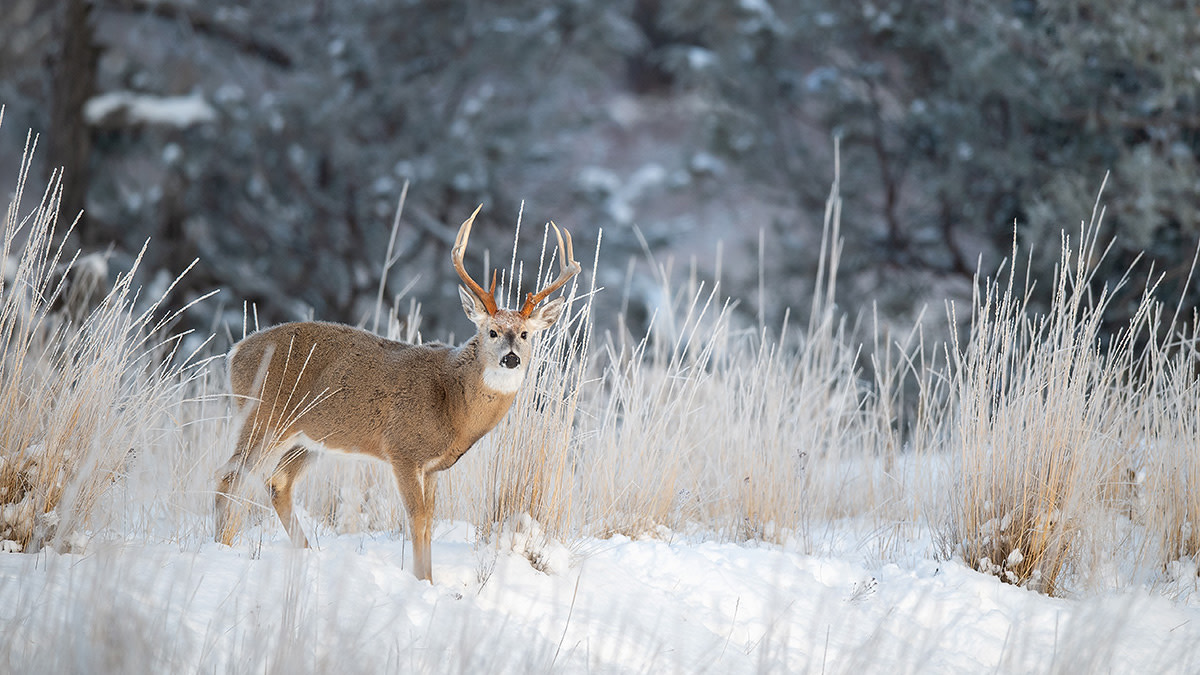
If you don’t hunt primo ground, then your biggest challenge as a whitetail hunter might just be getting an arrow into a buck after the gun season. The general consensus from the hunting industry on how to do this is pretty simple, and also mostly irrelevant.
The advice goes as follows: find a destination food source, wait for a rut-ravaged buck to show up, and then shoot him. Unless they are starving, most bucks aren’t that excited to put themselves in danger at the end of the season. They know they have many more hours of darkness to work with if they want to move, and they know those food sources are where most hunters will wait for them.
This doesn’t mean that you’re out of the game as a pressured-ground hunter. It just means you need to recognize the spots where bucks are most vulnerable right now.
Small Windows Of Opportunity
The reason the rut is so popular is because it offers an all-day chance to shoot a good one. The reason the late season is so unpopular is because it’s the time of year when daylight movement is the least likely it’ll be all season. It’s worse than the October lull, if you believe in that sort of thing.
If you’re sitting on a buck tag and there is still some time to bowhunt, your job is to figure out what most of the deer are doing right now. Then, you have to recognize where a buck will be in that pattern and how you can meet up with him, given the fact that he might only move a tiny bit during shooting hours.
Look For Any Clue You Can
Trail camera images, tracks, and actual sightings are your best friends right now. If your cameras show bucks showing up in the groceries 20 minutes after dark, you know that they are probably bedding and staging nearby. If they don’t get there until midnight, they might have something else they are doing for hours.
Trail cameras provide a glimpse into their world, but it’s far from the full picture. You should use every bit of intel you can get beyond cams. If you have a chance to sit back with the spotting scope and watch, do that. If you have to slip in and use observation stands to watch a woodlot, so be it.
Success this time of year hinges on finding a buck in a spot where you can kill him in daylight. You’ll mostly get that through careful observation, but even then, it’s not so simple when you move in for the real hunt.
Ladies First
A couple of weeks ago, I sat on a farm to try to fill a doe tag. While the ladies showed up fairly early, they never offered me a shot. About 20 minutes before dark, a small buck passed through. Five minutes before legal shooting light wrapped up, a solid 125-inch deer walked by at 20 yards.
It’s pretty common to see does and young bucks moving before bigger deer, but it’s nearly inevitable this time of the year. That’s no secret, but it does tell you something important—you better not get busted by the non-target deer.
Wind direction, proper access, and the amount of pressure you put on any given spot will play into this. I find myself sandbagging sits in the late season because of the conditions, but I don’t sit things out. If everything isn’t right, I’ll hang back and hunt a secondary spot, mostly for the observation benefits.
When things are right, it’s time to move in and stay real still as the non-target deer pass through.
Surprise, Surprise
Even if you do everything right, this is the easiest time of year to get busted. Figure out how to keep surprising the deer with your setups. Instead of sitting the same ladder stand, build a natural ground blind on their route from bed to food.
Instead of climbing into the same box blind you’ve hunted 20 times this season, saddle up in a spot where you rarely hunt. This is often the difference maker between hunting late-season bucks and shooting late-season bucks. It’s something most hunters won’t do because it’s easier to default to old standby setups. But, if you want to fill that buck tag, it’s almost a necessity where the deer have been pressured.
For more information on hunt whitetails in the late season, check out these articles: The Cure For Your Late Season Troubles, The Ideal Conditions For Late-Season Deer Hunts, and To Kill A Late Season Buck (Without A Food Plot).
Feature image via Matt Hansen.




